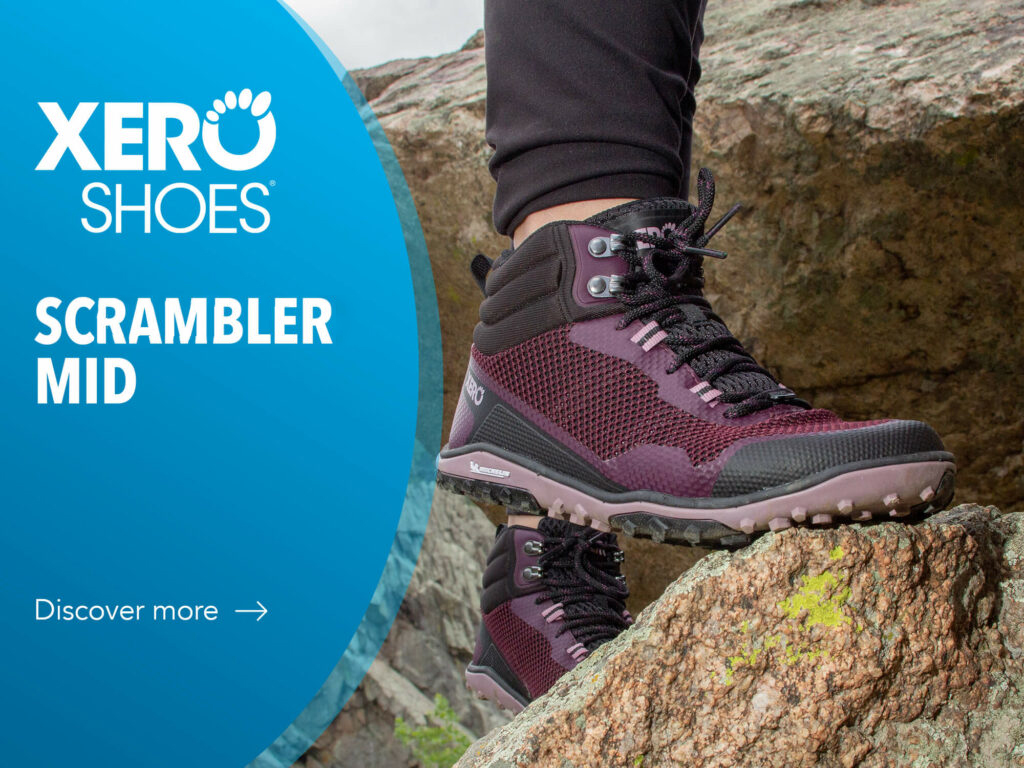Observing the world from above offers a totally different perspective. Whether it’s on the roof of the world or on the roof of a building. Because all that matters, sometimes, is the breathtaking view of what remains beneath our feet. A whole world, a daily life from which we move away to see it with different eyes.
As you can guess, we are not talking about trekking in the mountains, but about a very particular professional field. Our ‘column’ on professionals in the world of work continues. Today we enter, or rather, we go up to know that of work at height. Where every precaution is never too much and, above all, PPE (Personal Protective Equipment) makes the difference. Devices including, of course, safety shoes.
Table of Contents
What is Work at Height?
The term “Work at Height” refers to all those tasks that are carried out not in contact with the ground and at a height such that a fall would cause injury. That’s why it’s famously known as one of the industries where the risk is highest. For this reason, all professionals are equipped with different protections, both personal and collective.
To be able to do this type of work, it is necessary to be competent, well-prepared professionals with a good dose of experience in the sector to be able to better manage the critical issues that may arise. To guarantee this, there are courses and licenses that prepare the worker to face the critical issues of working at height and the use of PPE.

What are the Risks of Work at Height?
As the name may suggest, the risk of work at height is mainly related to the height at which it is carried out. The category itself refers to a probable risk of falling. But there can also be other risks.
As we have seen in the definition of tasks, the most serious risk is falling from a height that causes serious injury. But safety measures also take into account accidents that can also occur in the air. Such as, for example, shocks due to the pendulum effect or general injuries, such as cuts, crushing and blows of various kinds.
But there is also a syndrome that should not be underestimated. It is called “harness syndrome” and occurs in conditions of inert suspension of the body.

It happens when, following a fall, the worker gets caught in mid-air in the ropes that supported him and can no longer move. If the intervention is not timely, the person can even lose consciousness and, in extreme cases, lose their life.
How to Avoid these Risks?
As we have just seen, the risks of working at height can be really dangerous, with even lethal consequences. For this reason, evaluation guidelines have been drawn up that provide for in-depth checks and solutions depending on the work in progress.
Factors such as height, duration and frequency with which the task must be carried out and the different surfaces on which professionals will have to work or come into contact are evaluated. Each of these factors is decisive for the success of a job that literally keeps the lives of competent and prepared people hanging by a thread, albeit very robust. But of course, there are also other ways to reduce the risks of working at height.
According to the guidelines, it is always advisable to avoid working at height. As far as possible, in fact, the first rule is to avoid all work that is not strictly necessary to carry it out in safer situations. But if this is not possible, it is useful to know about the prevention measures to be put in place.

First of all, you can take precautions, which of course vary depending on the work environment. For example, you can try to reduce the distance of the worker from the ground or from a raised surface placed to protect the professional as much as possible. Or by properly using the equipment provided by the employer that serves to protect the person. We can distinguish them into collective and personal protections.
Collective Protections (DPC)
By “collective protection” or DPC we mean all that equipment that does not require the direct intervention of a person in order to be effective. They are designed for the safety of the entire work unit at height and are positioned along the work area for the entire duration required. This group includes guardrails, permanent or temporary, scissor lifts and tower scaffolding.
Personal Protective Equipment (PPE)
In contrast, personal protection, also known as PPE, is equipment that requires the direct intervention of a person. A practical example is harnesses. It is not enough to have them on for them to be effective. It is precisely necessary that they are correctly worn and connected in order for them to perform their function and protect people from the various risks presented above.
The Legislation Relating to Work at Height
The laws governing work at height all date back to the early years of the new millennium and summarize what has been said above about the guidelines to be maintained to ensure the safety of its workers.
These laws, which are different for each country, all aim to ensure safety in the workplace in order to significantly reduce the incidence of accidents, even minor ones. It therefore falls entirely on the shoulders of the employer, who is solely responsible for the conditions of his employees. It is always your job to properly plan and supervise the activities carried out and to hire only highly qualified personnel for the required work.
In addition to the employer’s obligations, there is also the provision of the various protective devices, which must be adapted and evaluated according to the tasks and the working environment.
Equipment Needed for Work at Height
But what equipment is needed for work at height?
A few paragraphs higher we learned about the wording DPC and PPE. And in this too we will report them, maintaining the clear distinction between the two categories.
Collective protective equipment (PPE) is, in most cases, the most effective solution for working at height to reduce the risk of falls and to protect several people at the same time. We’ve already seen a few examples, but they also fall into this category:
- Safety nets;
- Temporary parapets;
- Scaffolding and temporary walkable works.

Photo credit: Kevin Grieve | Unsplash
When it comes to personal protective equipment (PPE), however, we have a wider choice. They must always be present if the DPCs have not been prepared and they must be fit for the job to be done. So, from the list that will follow, they may not even be present during a certain job, if the job does not require them. All of them, however, must comply with technical standards. Here are the PPE for working at height:
- Energy absorbers;
- Connectors;
- Anchoring devices;
- Lanyards;
- Retractable devices;
- Flexible guides or lifelines;
- Rigid guides or lifelines;
- Harnesses;
- Fall arrest and “positioning” lanyards;
- Removable fall arrest system.
And that’s not all. Because among the PPE we can also include all those that are also essential for other sectors, such as hard hats, safety gloves, belts and suitable clothing. And, of course, safety shoes or boots.
The Right Shoes for Working at Height
Safety footwear is an essential component for working at height. And we’re not the ones saying that! We have been able to understand how dangerous this type of work is, so every PPE is essential to ensure safety and peace of mind for the person who is working.
Specifically, shoes are very important because they act as contact with the work surface and protect the foot from any impacts. That’s why the choice of shoes is crucial, it’s important. But before we look at some specific models, let’s talk about the characteristics that each footwear should have.

Photo credit: Ahsanization ッ | Unsplash
First of all, as we have often seen for other professionals, the shoe or ankle boot must be equipped with a reinforced toe cap to minimize damage to the foot as a result of impact or crushing.
And then it should have a non-slip, insulating and anti-puncture sole. Three characteristics for a single part of the shoe which, however, proves to be essential for all the jobs that the professional will have to face.
Anti-slip properties are critical. A fall can cause serious damage, so the main function of the sole must prevent slippage or loss of balance. The ability to protect the person from accidental electric shock is also necessary. A construction site can also be a dangerous place due to exposure to wires or electrical equipment. It is therefore useful to look for a shoe built with non-conductive materials.
Finally, we have already seen in other articles how building contexts can have sharp materials, such as nails or splinters. That’s why having a reinforced sole that is resistant to any puncture is useful to be able to move easily and without worries on construction site surfaces, which are often chaotic and full of objects that are difficult to pay attention to.
But are there any shoes that have all these characteristics? The answer is “Of course yes!” and we have selected three for you.
Arbpro | EVO 2
With a minimal design but with bright colors that immediately attract attention. These climbing boots are designed especially for arborists. 100% Made in Italy and designed to allow high performance, they will be the perfect choice for all arborists.

Photo credit: Arbpro
The Vibram sole, in fact, is designed to have a strong grip on any surface and is custom-made with a “climbing zone” toe cap that offers optimal grip.
The boot is also equipped with a new lacing system, without metal hooks, which also secures the foot to other PPE without risking damaging them. Finally, the upper is made of high-quality “Perwanger” leather and with a rubber profile. That and the Event membrata offer the foot excellent breathability, water resistance and unparalleled comfort.
Elten | Mason pro gtx mid esd s3 ci typ 2
We also call into question Elten, a famous German safety shoe brand, and its high-performance lace-up ankle boot. Each model is available in three different fits to meet the needs of the three most common foot types. It is the ERGO-ACTIVE concept to leave the most uncomfortable, stringent and unadaptable ankle boots in the past.

Photo credit: Elten
The MASON Pro GTX Mid ESD S3 model is very durable because it is equipped with a cowhide upper combined with the GORE-TEX lining. Both ensure dry feet even in rainy weather. As mentioned in the paragraph of characteristics, it is totally metal-free, even in the protective parts of the foot, such as the integrated steel hood on the front. Finally, the sole is made of PU/PU, SRC certified and ESD compatible to protect the foot from sharp objects.
Kaliber | Raptor
Here’s our latest offering, straight from South Africa: the Raptor work boot. Like the other models offered, it has all the features desired for work at height. From the steel toe cap that resists up to 200 Joules, to the puncture-resistant midsole, to the sole with different properties. Non-slip, antistatic and oil-resistant. It is also designed in dual-intensity polyurethane to ensure better cushioning.

Photo credit: Kaliber
This footwear is specifically designed for building contexts. For this reason, it has a genuine buffalo leather upper, which makes it very durable, a padded collar for maximum comfort and a reflective strip that allows you to have greater visibility of the person during work tasks.
Now that you have a clearer overview, are you ready to change your perspective?
You may also be interested in the following articles:

How to move around the stage: the best footwear for concert workers
From the most visible stewards to the backliners no one ever notices: learn about all the concert worker figures that revolve around a live show and how each shoe best supports them.

In the Shoes of a Health Worker: A Life on the Ward
Heroes of the pandemic, backbone of society: we discover the shoes of a health worker must wear with a look at his or her daily life

Work & safety thinks female
In the world of personal safety equipment, women have almost always been overlooked. Few products designed specifically for the world of female workers. But that is changing.













































